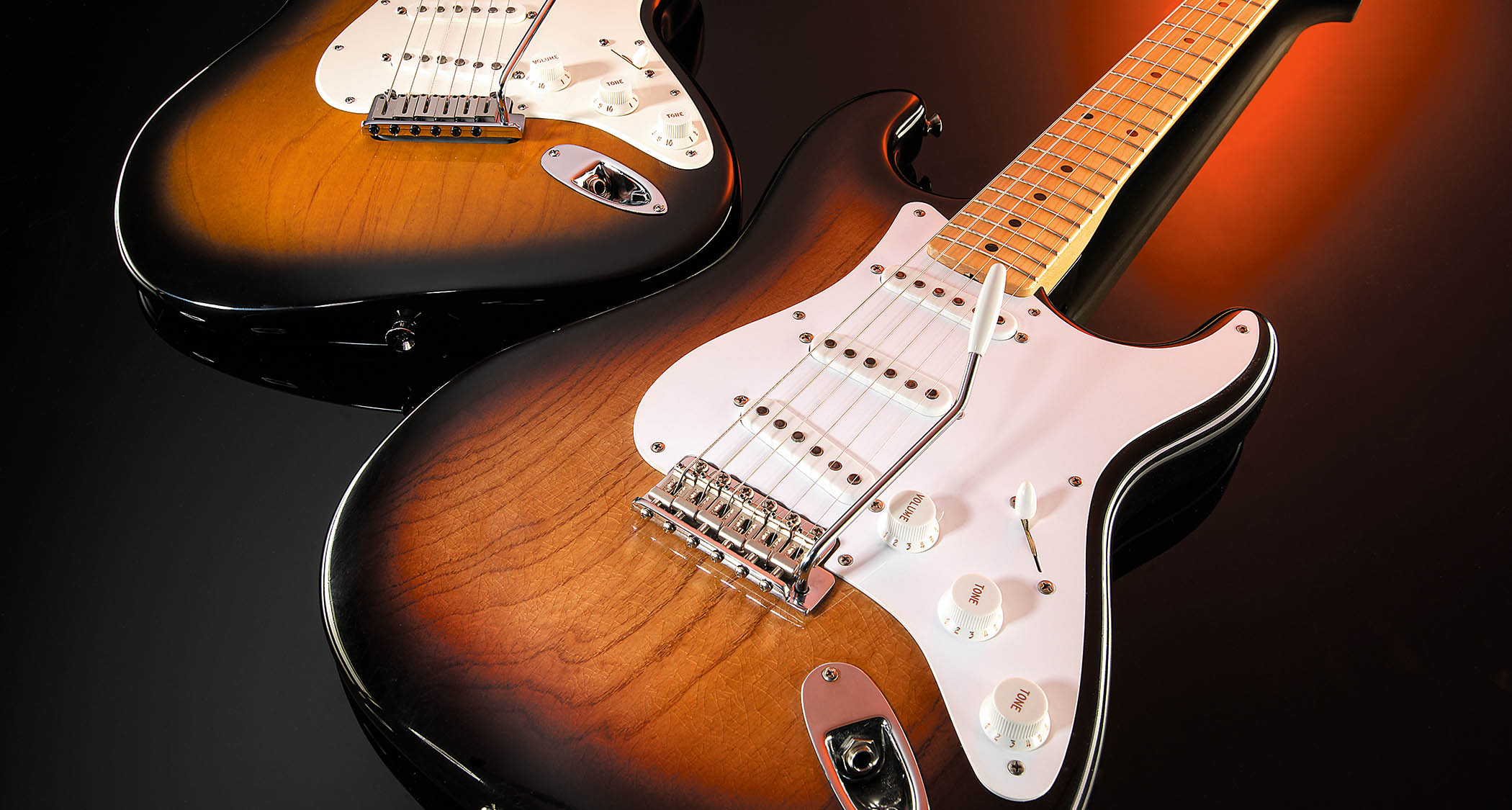
The Fender Stratocaster is the most successful electric guitar design of all time. No guitar has shaped popular culture like the Strat. Its double-cutaway design is the acme of guitar shapes, arguably the most copied, the most easily recognisable. The Stratocaster’s cultural legacy, ignited in 1957 when Buddy Holly debuted it with the Crickets on The Ed Sullivan Show, transcends the instrument itself.
Its story is not just about its impact on guitarists’ imagination. And yet as a musical instrument, a piece of engineered design, it has remained relevant, a fact that rests upon its player-friendly ergonomics, with contouring to accommodate the forearm and to sit better against the body, the versatility of the three-pickup format, but also a subtle but telling evolution in its specifications that has often been led by those who played it.
Some of the standard specs we see in Fender’s Stratocaster lineup today – the five-way switching, bridge humbuckers – came from players. Before 1977, Strat players had to manually manipulate the three-way switch to get those in-between sounds of positions 2 and 4, the sort that Jimi Hendrix popularised.
The modular build allows players to modify components or swap them out entirely. Not getting along with the tremolo? Block it off. If it’s got screws you can unscrew it; if it has solder, it can be rewired.
You would not be the first to execute the Dan Armstrong/HSH wiring mod that connects all three single-coils to the neck tone control, allowing you to use the middle tone control to select between regular single-coil operation or to combine the neck and bridge pickups with the middle in series for humbucking tones – a new trick for an already versatile guitar.
Do you want more from your bridge pickup? You could fit a steel inductance plate under it, then remove it if you don’t like it. Don’t like the neck shape? Someone will sell you a spare.
That’s how Eric Clapton’s Blackie came to be. It was a buyer’s market for Strats in 1970 and Clapton was buying. Taking full advantage of the bolt-on build he had the neck from his alder-bodied ’56 Strat swapped out for a ’57 neck, its V-shape more to his liking.
He changed the pickups, too, kitting Blackie out with a greatest hits of Strat pickups so far. In a coup de grace, he blocked out the vibrato, too. Blackie was his “mongrel”. In Pasadena, California, a young Eddie Van Halen was paying attention…
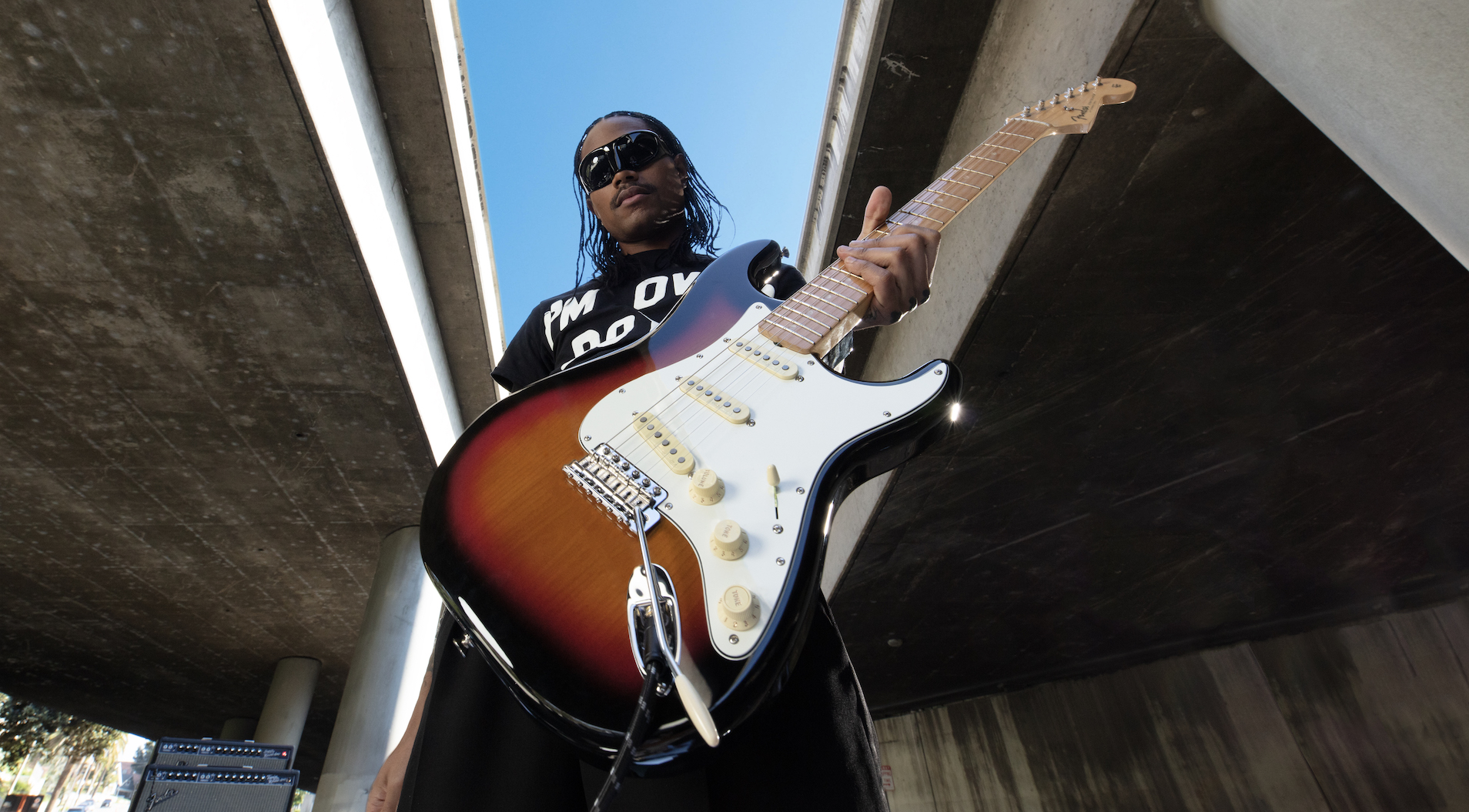
Some of the most radical specs found on today’s Stratocasters were borne of artist collaborations, such as the onboard fuzz circuit on the Steve Lacy ‘People Pleaser’ Strat, or the 12dB mid-boost circuit of the Juanes Strat. Ed O’Brien’s Strat has a Fernandes Sustainer at the neck position.
Does all this mean that Leo Fender didn’t get it right the first time around? Well, maybe. But consider this: for all the changes over the years to the pickups, neck shape, vibrato design, hardware, tonewoods, fret-size, fingerboard radius and so on, the concept of the Stratocaster has changed little since its 1954 launch. Leo Fender created an archetype. He created a platform. It was designed to evolve.
The shape of things to come
Leo Fender did not act alone. It was his name on the headstock, his company, his call – but he had help. Not being a musician, he needed assistance when designing a follow-up to the Telecaster.
Feedback from pro players was invaluable – not to mention their ideas. Freddie Tavares, a Hawaiian steel guitarist who worked with Dean Martin and Elvis Presley, who played the famous intro music to Warner Bros’ Looney Tunes features, can take much of the credit for the shape, which took cues from the Precision Bass. Bill Carson had the right stuff as the Strat’s test pilot (and catalogue model).
Speaking to guitar historian Tony Bacon for a 2019 Reverb feature, Carson recalled the early knock-ups to be “very ugly, but very playable” and with plenty finessing to be done – the prototypes Fender and his lieutenant George Fullerton presented him lacked balance.
“A big part with me was that the guitar should fit like a good shirt and stay balanced at all times,” said Carson.
“I said that so many times that Freddie and Leo both got pretty tired of hearing it. But finally they glued a horn on the upper bout, and it was pretty close to balancing. They extended it one more time, and it did balance, but it was really ugly by the standards of the day. Then Freddie Tavares said it wouldn’t be quite so ugly if we put a small horn on the lower side and gave it a little symmetry there, so we did that.”
That a Strat could exit the factory in 1954/’54 and be played on a landmark rock release from 1979, with Gilmour describing the guitar as “perfect”, speaks to the success of Fender’s early work
Carson attributed the front-mounted jack design to Fullerton. Fender sales executive Don Randall named it the Stratocaster. Its contours owed much to country-western guitarist Rex Gallion’s input. Gallion’s reward was a custom build bearing the serial number #0001, finished in white, that would later be owned by Seymour Duncan, and ultimately David Gilmour, who used it on Pink Floyd’s Another Brick On The Wall.
That a Strat could exit the factory in 1954/’54 and be played on a landmark rock release from 1979, with Gilmour describing the guitar as “perfect”, speaks to the success of Fender’s early work.
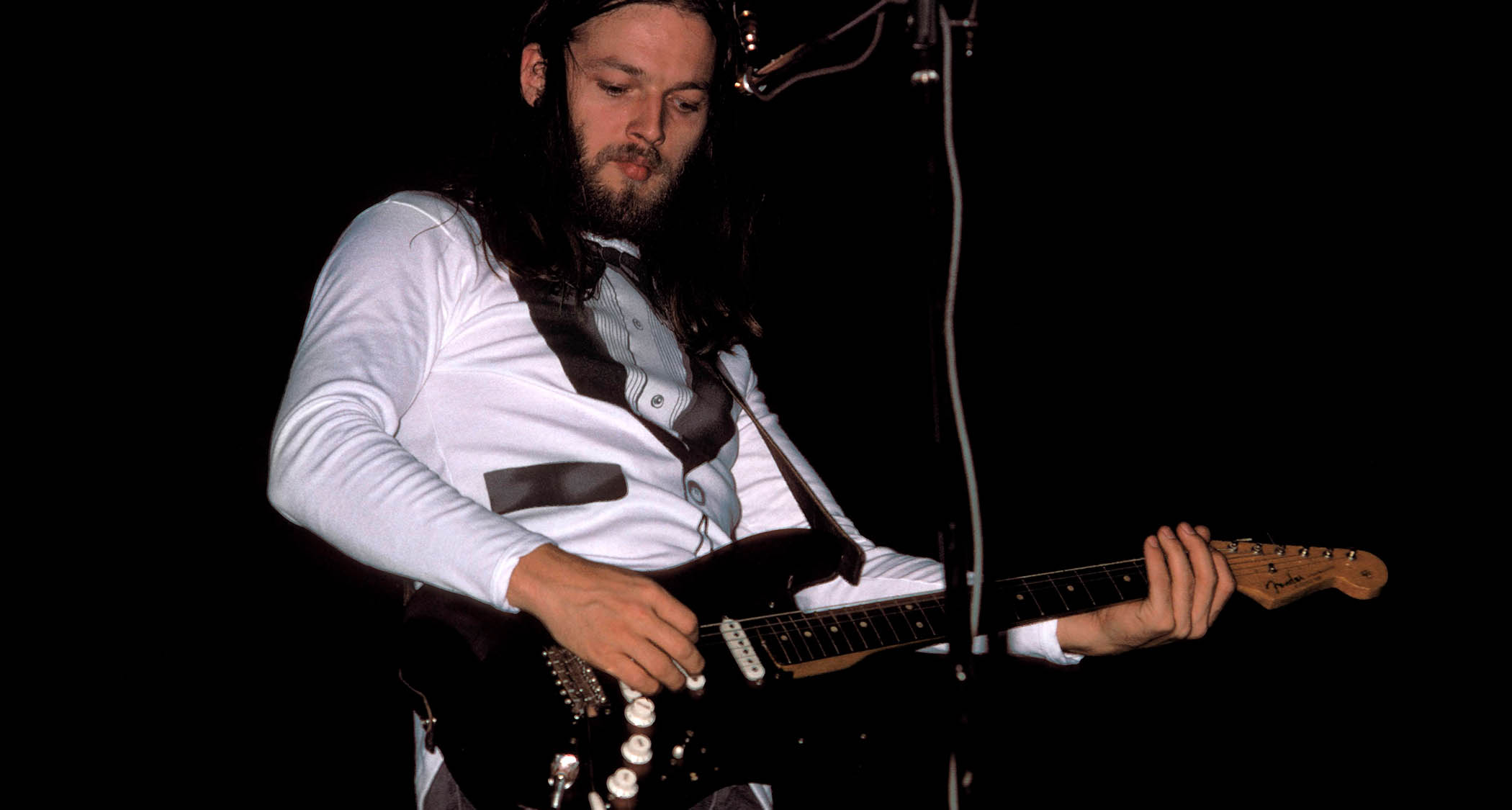
Not everything was perfect, though. Production ground to a halt in 1953 when the vibrato design proved not fit for purpose. It made the guitar sound like a “tin can”, said Fullerton, who sounded the alarm. That ultimately delayed the guitar’s release, costing Fender a lot of money. But the redesigned unit, which incorporated a steel block and would be named the synchronized tremolo, sounded just right.
Back in the 1950s, the Strat’s specifications would change from month to month. Maple fingerboards with nitrocellulose lacquer looked worn quickly so rosewood was brought in – ironically, decades later, with players’ appetites honed by the vintage market, players gladly paid extra for this on Custom Shop relics.
This on-the-fly tweaking from the factory floor presaged the modding and DIY partscaster movements. The partscaster, literally a Strat put together from different parts – custom made, vintage, salvaged, whatever – might not be a Fender-branded instrument but the practice channels the spirit of Leo Fender.
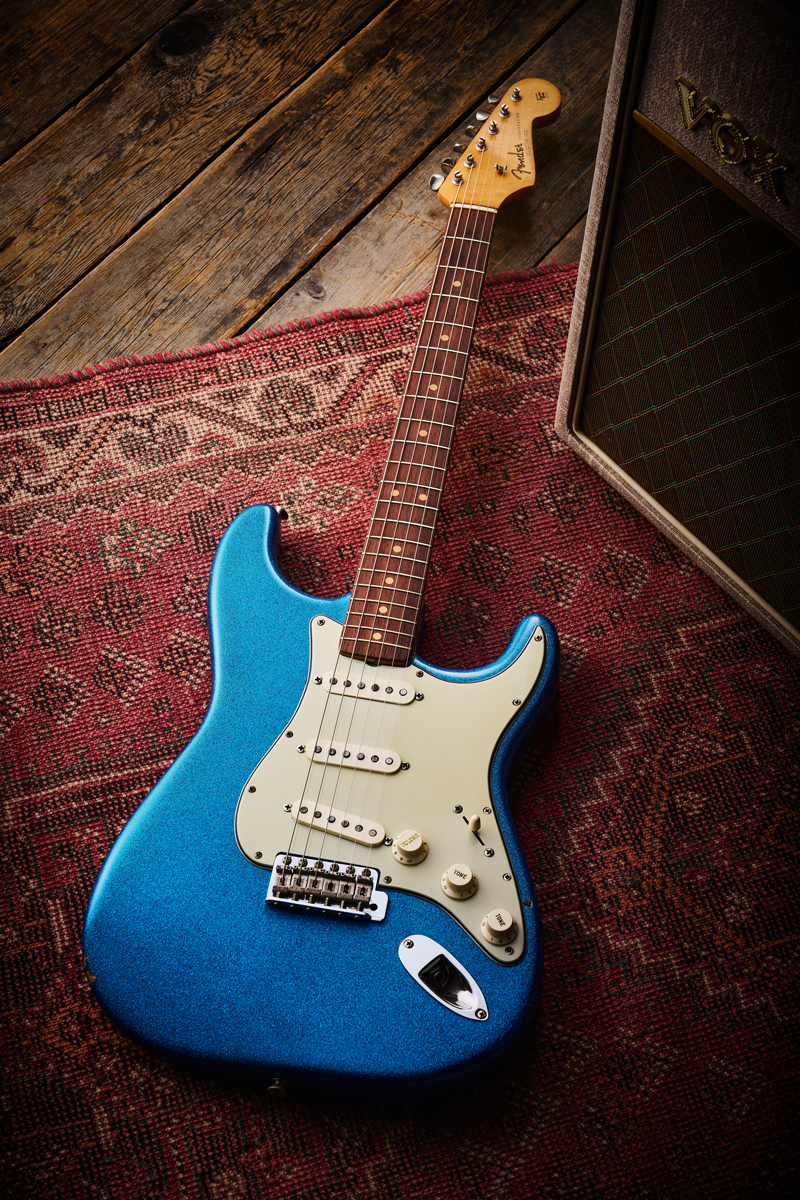
But to become iconic, for the Stratocaster to sustain itself, its revolutionary musical potential needed to be demonstrated, onstage and before witnesses. What better way to show just what the Strat was capable of than turning a right-handed model upside down, restringing it for a lefty, and playing it through dimed Marshall and Sunn stacks?
What better way to baptise it as a countercultural weapon than dousing it with lighter fluid and baptising it in fire? For the Strat to become a legend it needed to be played by them. Enter, Hendrix et al…
Folk, fire and acid: Newport, Monterey, Woodstock
Once it rolled off the production line in California, the Stratocaster needed moments to capture the public’s imagination.
If Buddy Holly effectively introduced it to the world in ’57, it was Bob Dylan who first recognised its potential for torpedoing staid genre expectations, taking to the stage at the 1965 Newport Folk Festival with a ’64 Strat for an electric performance that lasted just 17 minutes but will be remembered for eternity. As many hated it as were thrilled.
What they had seen, however, was a first. How were they supposed to react?
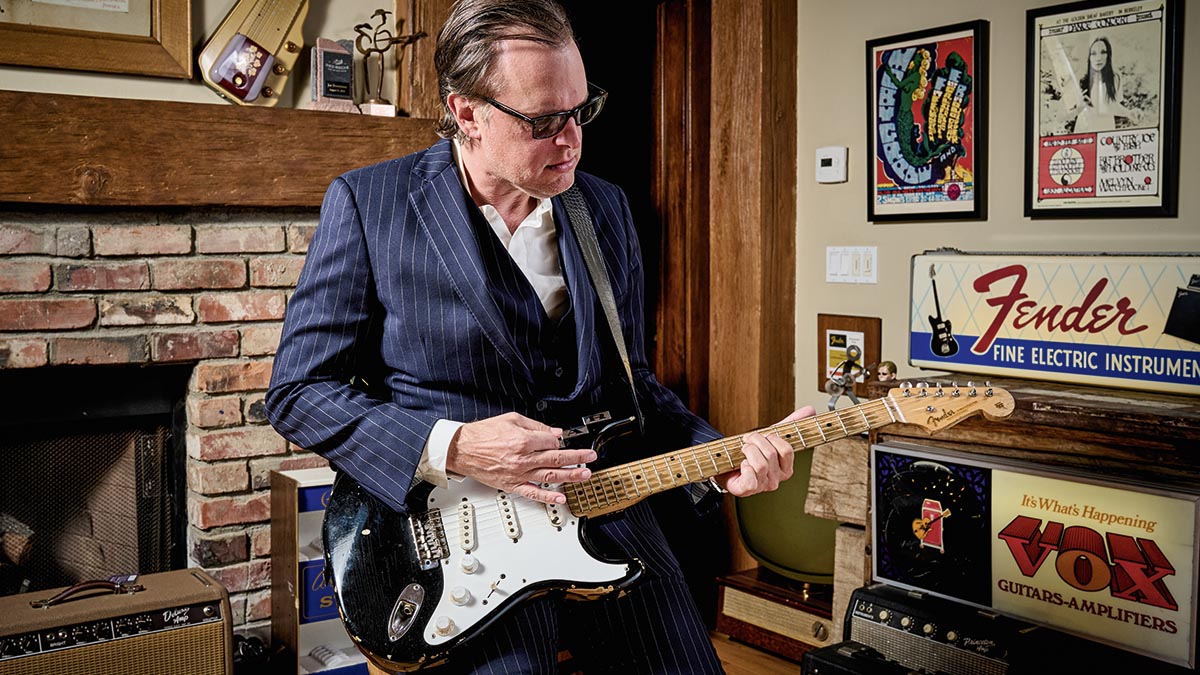
“In 1965 it was probably the loudest thing anyone in the audience had ever heard,” wrote Joe Boyd in his 2006 memoir, White Bicycles: Making Music in the 1960s. “A buzz of shock and amazement ran through the crowd… There were shouts of delight and triumph and also of derision and outrage.”
Radicalism was in the air in the late ’60s. Jimi Hendrix had the chops to articulate it through a blues style turned inside out with psychedelics, and a preternatural feel for the force of volume and sound in rock.
His Strats, reversed, would facilitate his art and suffer for it. At the climax of his 1967 show at the London Astoria, he anointed his guitar with lighter fluid and set it alight, a test run for his forthcoming performance at Monterey Pop, where he closed out the set with Wild Thing and the sacrifice of his ’65 Strat.
“We had our beautiful rock-blues-country-funky-freaky sound, and it was really turning people on,” Hendrix recalled in the biography Starting At Zero: His Own Story. “I felt like we were turning the whole world on to this new thing, the best, most lovely new thing. So I decided to destroy my guitar at the end of the song as a sacrifice. You sacrifice things you love. I love my guitar.”
By Woodstock ’69, Hendrix’s guitar was doing the destroying. This ’68 Strat in Olympic White – aka “Izabella”, serial number #240981 – did the damage during a triumphant set that turned The Star-Spangled Banner into a pulsating work of psych-noise, an instrumental protest song. The Strat officially got its stripes.
Sustaining it
Tastes change in music. The ’70s tastes for humbucker pickups challenged the Strat’s appeal, but did it ever go out of fashion? The Strat could still count on standard bearers such as the aforementioned Gilmour and Clapton, Genesis’ Mike Rutherford, George Harrison, Ritchie Blackmore, Jeff Beck and Nile Rodgers, whose Hitmaker Strat has sold more records than any other.
Fender’s CBS era, from the mid-’60s to early ’80s, was a difficult time for the brand. There were a lot of spec updates. Not all landed.
Some players, like Eddie Van Halen, took matters into their own hands. The need for a high-performance Strat variant with a humbucker at the bridge was the impetus for his Frankenstrat, which seated a Gibson PAF in a Strat body, and over time developed into the Superstrat, complete with double-locking Floyd Rose vibrato.
Ex-Fender employer Wayne Charvel, who had been making a living servicing guitars and selling parts, entered the hot-rod business, working with Grover Jackson on bespoke high-performance S-styles. The Charvel and Jackson brands eventually came home to roost under Fender’s ownership in 2002.
In the ’80s, players wanted to play faster, louder. Not all coveted humbuckers. The precision of single-coils (and perhaps the influence of Blackmore, too) made the Strat Yngwie Malmsteen’s weapon of choice.
“I refused to hack my Strat up and put a humbucker in it because everyone else on the planet did,” Malmsteen told MusicRadar. “And that was a big deal for my sound. People would say, ‘He sounds different… Clean!’”
Speaking of ’80s cultural moments for Stratocasters, in a shred context, Malmsteen’s 1984 album Rising Force is hard to beat. In blues, we had another generational talent, Stevie Ray Vaughan, redefining what was possible on a Strat.
I refused to hack my Strat up and put a humbucker in it because everyone else on the planet did,
Yngwie Malmsteen
Fender responded to Superstrat provocations with the HM Strat, but did not officially have a full production run HSS Strat until 1996’s Lone Star. The advances in pickup design – noiseless single-coils, stacked humbuckers – presented players, and Fender, with more opportunities for adapting the Strat for popular music’s next generational shift. Nirvana’s Kurt Cobain and Pearl Jam’s Mike McCready played ’em and smashed ’em.
It helps that the human form is unchanged; the Strat is still sympathetic to our physiology.
Its growing vocabulary of sounds and features, Fender’s Janus-faced expansion of the Strat catalogue, both looking forwards to new looks and features and backwards to reanimate classic designs in its Vintera, American Vintage and Custom Shop lines are all factors in keeping it relevant – not to mention Fender recognising the Strat as an ideal beginner guitar, and producing them under its affordable Squier sub-brand.
Moreover, it is still being played; by Idles’ Mark Bowen on The Tonight Show, by H.E.R. at the Super Bowl… and remember John Mayer’s legendary 2009 Grammys performance of Gravity?
Each generation finding its own sound, impressing their identity onto the Stratocaster, as only a good instrument allows. And occasionally setting it on fire or smashing it into pieces because, as Hendrix says, you have to make sacrifices for art.







